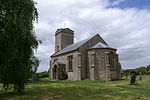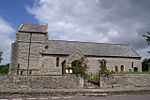RAF Weston Zoyland

RAF Westonzoyland is one of the United Kingdom's oldest airfields, being established in the early 1920s. The airfield is located approximately 4 miles (6.4 km) east-southeast of Bridgwater, Somerset; about 125 miles (201 km) west-southwest of London. It was opened in 1925 with summer camps lasting from May until September each year. It was later used by the Royal Air Force and United States Army Air Forces. During the war it was used primarily as an army co-operation airfield but several squadrons were based there with a variety of aircraft, including Spitfires, Hurricanes and Mosquitos. Gloster Meteor jets were stationed there for a short time before moving to RAF Culmhead in Somerset. After being stood down in 1947 it was recommissioned in 1952 as a Meteor jet training station to support the demands of the Korean War. It was home to No. 209 Advanced Flying School RAF whose pupils included future Air Chief Marshals Lord Craig and Sir Patrick Hine. Today the remains of the airfield are a mixture of farmland and a base for Civil Air Patrol activities.
Excerpt from the Wikipedia article RAF Weston Zoyland (License: CC BY-SA 3.0, Authors, Images).RAF Weston Zoyland
A372,
Geographical coordinates (GPS) Address Nearby Places Show on map
Geographical coordinates (GPS)
| Latitude | Longitude |
|---|---|
| N 51.106388888889 ° | E -2.9083333333333 ° |
Address
A372
TA7 0NX , Middlezoy
England, United Kingdom
Open on Google Maps










